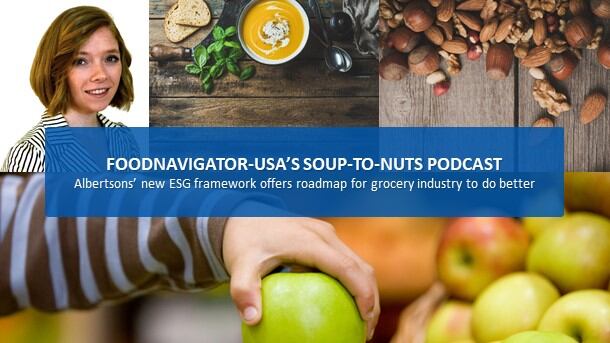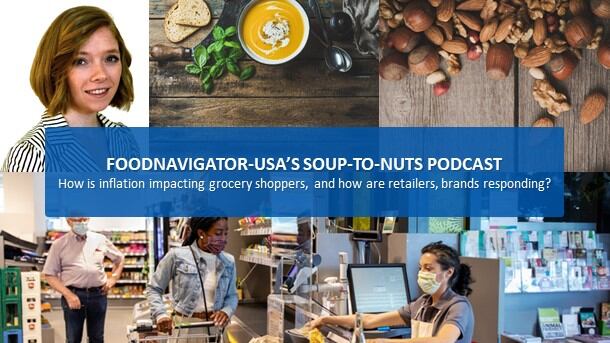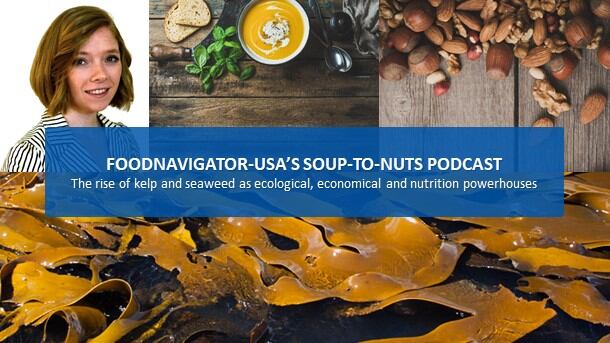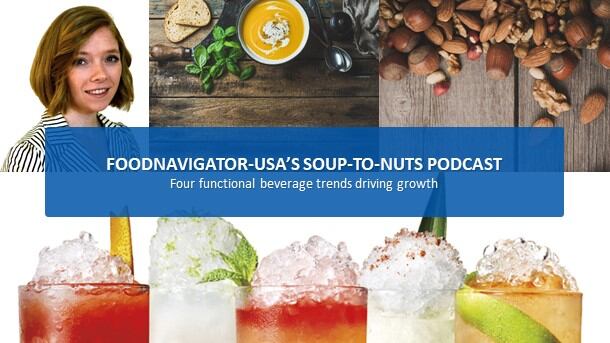At the time, Fink called on companies to be more deliberate, committed and transparent in their sustainability efforts – if they weren’t, they could miss out on capital as he warned BlackRock would be “increasingly disposed to vote against management and board directors when companies are not making sufficient progress on sustainability-related disclosures and the business practices and plans underlying them.” https://www.blackrock.com/americas-offshore/en/larry-fink-ceo-letter
In the years since Fink’s warning, many businesses have restructured and doubled-down on their approach to their environmental, social and governance efforts, and in doing so discovered that what is good for the planet often also is good for business.
Among those who heard Fink’s call-to-action is Albertsons Companies, which had long promoted ESG efforts but realized that to maximize its positive impact and reap the business benefits it needed to be more strategic, focused and open about its goals and progress. So, with the help chief sustainability and transformation officer, Suzanne Long, Albertsons Companies recommitted and restructured its ESG efforts under a new framework announced last week.
In this episode of FoodNavigator-USA’s Soup-To-Nuts podcast, Long walks us through Albertsons’ “Recipe for Change” framework, which centers on four prongs: the planet, product, community and people. She also shares early results from several initiatives and advice for others in the food and beverage industry looking to improve their environmental impact and strengthen employee and consumer loyalty.
[Editor’s note: Never miss an episode of FoodNavigator-USA’s Soup-To-Nuts Podcast – subscribe today.]
The time to act is now
Climate change, even under its current moniker, is not a new concept or threat, but it has taken on a sense of urgency in the business world in the past two years – a shift that Long attributes in part to Fink’s 2020 letter, but als
“There are some companies that have been doing work in this space for a very long time, and Albertsons is a great example of that. But I don’t know that everyone was doing it in a very strategic way, and was really focusing on the areas that mattered most,” Long said.
But she said companies began integrating ESG into their businesses and reinforcing it with support from the boardroom and the c-suite when, in addition to investors, consumers became interested and demonstrated a willingness to pay more to support these efforts.
Designing a roadmap to stay on course
As awareness of and interest in ESG goals mounts, companies likely will feel pushed and pulled in many directions by different players, but the reality is no matter how committed a business or entrepreneur is, they only have so many resources, which is why Long advises companies to hone in on the areas where they can make the biggest impact and transparently outline and track their progress towards those goals.
“To start the process, we did what’s called a materiality assessment” to identify 19 high priority areas as well identify elements that are table stakes for the company, Long said. The company then divided these into the four pillars to keep track and systematically advance each value.
Planet priorities focus on climate action
Within this framework, and looking at where Albertsons’ could have the biggest positive impact around climate action, Long said that the retailer determined it could quickly reduce its carbon emissions by 47% by 2030 simply by rethinking how it uses refrigeration and refrigerants.
“When you think about walking into a grocery store, you know, in your mind's eye, pivot yourself around the store, there are refrigeration units and freezers everywhere, right? It's in the deli. It's in the meat department. It's in the freezer section. It's where you buy your dairy and your cheese and it really throughout the store. And so by having so much refrigeration, and by having large footprints of our stores, we consume a lot of energy in our business. And so that makes up about 43% of our scope one and two footprints of our own of our own carbon footprint,” Long said.
“The second piece is refrigeration requires refrigerants and refrigerants are just inherently not good for the environment. And they can be not good in two ways. One, just in the course of using refrigerants, some of them get emitted into the air But the other thing is that those refrigerants can have varying degrees of how much they impact the environment. And so you can actually use less carbon intensive refrigerants, to have a less of a footprint when it comes to carbon. And so what we did is since both of those two items, the refrigeration and the energy makeup 86% of our scope, one and two footprint, we knew that those were the two areas we needed to focus on most, and set a target around,” she added.
To reduce refrigeration and refrigerants, Albertsons is taking steps such as putting doors on cases that are typically left open, like the cheese or meat case, Long said.
To achieve its ambitious goal of reducing not just its own carbon emissions but those downstream from good sold to eventually become a net zero emissions business by 2030, Long acknowledged that the retailer cannot succeed by itself. Goals like this, and meaningful change at the global level, require partnerships, which is why Albertsons is engaging with top suppliers to set science-based carbon reduction targets by 2026.
Reducing packaging from suppliers to consumers
Many of the strategies that Albertsons is using to help partners reduce their packaging, emissions or food waste are also being deployed at the retail level and fall under the second prong of its Recipe for Change framework focused on product.
On the packaging front, Long explains that Albertsons’ efforts can be divided into three buckets: the packaging it uses for its own products, the packaging its suppliers and partners use and finally the bags consumers use to transport their purchases home.
To reduce packaging, Albertsons is focused on making the packaging for is private label products, as well as those it stocks from manufacturers, as recyclable, compostable and biodegradable as possible, Long said.
To reduce consumers’ reliance on packaging, Albertsons encourages the use of reusable bags and is piloting thicker reusable and washable bags that can be provided to consumers when they forget their own.
In addition to transitioning to a more circular economy, under Albertsons’ product pillar is an ambitious commitment to eliminate food waste going to the landfill by 2030.
“There's a there's a lot of really interesting work we've already been doing in this space, but also so much more we can do so for example, as a company,” Long said.
For example, the company looks for ways to use yesterday’s rotisserie chicken to make today’s chicken salad or yesterday’s French bread to make today’s croutons.
For inedible food, such as the rinds of melons that are cut in store for fruit salads, Albertsons looks for ways to redirect that to animals. For example, Long said, a chicken farmer picks up the scraps from some stores and feeds it to the chickens that are then sold to Albertsons.
“That is such a great example to me of how you can find innovative ways of taking something that, you know, is literally today's trash and turning it into tomorrow's treasure. And I think finding opportunities like that is where the grocery industry is really going to hit its stride,” Long said.
Community outreach and support
The third pillar of Albertsons’ new ESG framework focuses on community outreach and support, and again builds on many efforts that the retailer championed – especially around food insecurity, which dramatically increased in the US during the pandemic.
For example, Albertsons’ is committing to donating one billion meals by 2030. And while this goal is laudable, what Long says excites her even more is the retailer’s commitment to work with others to tackle and break the root causes of hunger.
“The bigger opportunity that's in front of us is really to help break that cycle of hunger, how do we keep someone from being hungry. And the thing is that the causes of hunger really vary by community, right? What is causing hunger in Dallas versus Chicago versus la versus Seattle very widely. And we believe that the unique role that we can play as Albertsons is that we can bring together people and organizations and politicians and city planners in a community to understand what is causing the hunger in their communities, and then partner together to solve it,” Long said.
For example, she noted, is hunger an issue because there are not a jobs in a community, in which case the retailer might work to provide more opportunities.
Diversifying leadership
The final pillar of Albertsons’ ESG framework focuses internally, but reflects a much larger issue with which most of corporate America is grappling, and this is providing a diverse, equitable and inclusive environment.
Long said Albertsons’ recognizes that it serves and employs a diverse group of people at the store level, but the farther way from the store, the less diverse the company has been.
We recognize that we need to change that director, that trajectory, and that we're taking big steps to be able to do that. And we hope to share more information in the coming months about some specific statistics around what that currently looks like,” she said.
As illustrated by Albertsons’ collaborative approach to each pillar of its ESG program and involvement of different stakeholders at every level, Long says moving the needle on sustainability will require a joint effort by retailers, brands, investors, consumers and other stakeholders. And while this may result in some “unconventional partnerships,” Long is optimistic that competitors can “lean in and lock arms” for the greater good and the good of their own companies.




